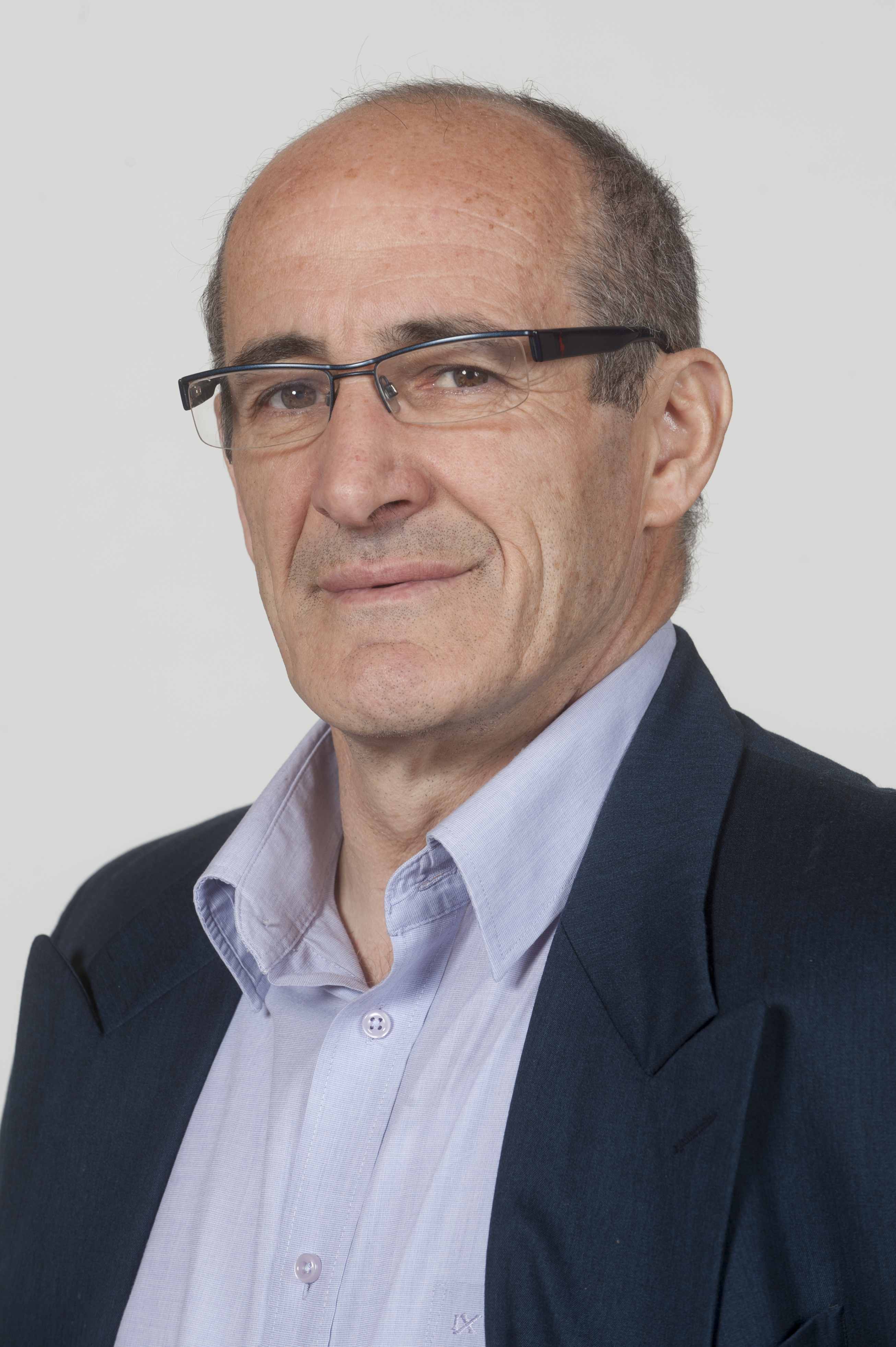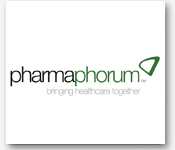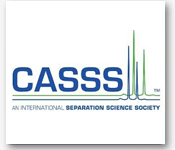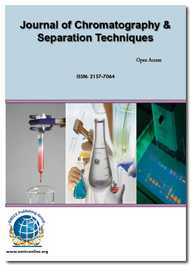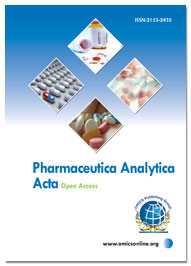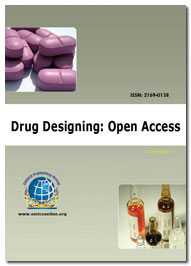Theme: Recent Advances in Separation Techniques for the Future Benefits
Separation Techniques-2015

Dear Colleagues,
Welcome to San Francisco and Separation Techniques Symposium and Exhibition 2015 Recent Advances in Separation Techniques for the Future Benefits.
It is with great pleasure to welcome you to the Separation Techniques conference 2015. Separation Techniques conference 2015will be held during August 10-12, 2015, San Francisco, USA. “International Expo on Separation Techniques" (Separation Techniques-2015) in San Francisco - a city noted for its unique energy, culture, cuisine, music, and easy living.
Separation Techniques conference 2015 in San Franciscois the place to learn about the latest issues important to discovery, development, and economic production processes inherent to a wide range of related technologies and techniques. The symposium will bring together the world's preeminent academic, government, and industrial scientists who will contribute cutting-edge presentations on emerging applications and processes. The meeting is structured with courses, tutorials, workshops, general and parallel sessions packed with plenary, keynote, invited and contributed talks, as well as prominently featured poster sessions and best poster awards. A key part of the program is the Exposition which is the largest, most comprehensive exhibition where companies launch new products and showcase the latest instrumentation, software and tools for performing state-of-the-art chemical measurements related to all types of separations in multiple disciplines. The program will not only benefit separation science experts, but will encourage novices entering the field to attend tutorial presentations where introductory materials will be provided.
See you at the international Expo on Separation technique August 2015 in San Francisco.
yours sincerely,
Gerhard Kratz

Global Sales Director
abcr GmbH
Karlsruhe Area
Germany

Welcome to the Separation Technique 2015 Conference.
This high profile conference to be held in beautiful San Francisco in August 2105, will cover the multiple aspects of Separation Techniques; from distillation to chromatography but also from analytical tools to production perspectives. Experts from all fields involving Separation Techniques are expected to attend and provide the latest trends and developments in their fields. Separation Technique – 2015 will bring high level scientists from academia and industry together to discuss technologies applications as well as analytical tools that are essential to the development of new products. Having the possibility to learn the state of the art in your technology is one of the benefits but being able to also explore alternate techniques and to discover other fields of application is what makes this conference so valuable. Either through lectures, seminars or workshops sessions throughout the three day conference, young scientist as well as seasoned experts can learn from Separation Technology 2015. Finally this world class conference will be a unique opportunity to network with chemists, engineers as well as executives and VPs.
We hope sincerely that your participation to the International Expo on Separation Techniques will be an unforgettable and productive scientific event.
yours sincerely,
Olivier Dapremont, Ph.D.

Executive Director, Process Technologies
AMPAC Fine Chemicals LLC
USA
Separation technique will bring together developers, users, academicians and researchers for sharing and exploring new areas of research and development and to discuss emerging issues.There will be many seminars, workshops and technical sessions take place in this conference series which will catch the attention of the professionals to attend the conference and it would enormously enrich our knowledge in understanding the current requirements of the global pharmaceutical industry. The expert will get an excellent opportunity to give many presentations and lectures on different topic and will also present their case studies.
The separation techniques industry is growing rapidly, with value expected to hit $228 billion by 2015, up from $164 billion in the year 2010, marking annual growth of nearly 7%, according to a recent industry research report.
Global revenues from chromatography reagents totaled nearly $4.3 billion in 2011 and $5.2 billion in 2012. Total revenues should reach $11.9 billion in 2017 after increasing at a five-year compound annual growth rate (CAGR) of 18%.Liquid chromatography, the largest segment, should account for $2.4 billion in 2012 and $7.1 billion in 2017, a CAGR of 24%.Gas chromatography will total $1.1 billion in 2012 and $1.7 billion in 2017, a CAGR of 9.5%.
The global market for commercial biotechnology separation systems reached $12.1 billion in 2010, $14.6 billion in 2011, and it will further grow to $26.7 billion at an estimated compound annual growth rate (CAGR) of 12.8% by 2016.The liquid chromatography separation systems segment was worth $2.3 billion in 2010 and $2.5 billion in 2011; the segment will further reach nearly $4 billion by 2016 increasing at a compound annual growth rate (CAGR) of 9.6% from 2010 to 2016 and the membrane filtration segment reached $2.5 billion in 2010 and is expected to reach $3 billion in 2011; it will further grow to and reach $3.8 billion by 2016 at a compound annual growth rate (CAGR) of 4.9% from 2010 to 2016.
Target Audience:
Chemistry Eminents, Professors and Scientists
Pharma Professors and Students from Academia
Drug Design experts
Drug Discovery & Formulation Experts
Drug Designing Tool Makers
Analytical and Validation Experts
Chemical Engineers
Microbiology Department
Forensic Experts
Directors/Managers & Business Intelligence Experts of Pharma Industires.
Pharmacology Department
Clinical Research & Clinical Data Management
Vice Presidents/Directors & Brand Manufacturers & Retailers
Quality Check Chemists
Track 1: Advances in Sample Preparation Techniques
Liquid/liquid extraction is one of the most widely employed and useful techniques in pharmaceutical sample preparation. This is due to a number of characteristics, including simplicity, rapid method development, and reasonable selectivity. Another one is Solid phase extraction (SPE) is a technique designed for rapid, selective sample preparation and purification prior to chromatographic analysis. Crystallization is also a chemical solid–liquid separation technique, in which mass transfer of a solute from the liquid solution to a pure solid crystalline phase occurs. In chemical engineering crystallization occurs in a crystallizer. Crystallization is therefore an aspect of precipitation, obtained through a variation of the solubility conditions of the solute in the solvent, as compared to precipitation due to chemical reaction.
Track 2: Membrane separation
Membrane separation processes operate without heating and therefore use less energy than conventional thermal separation processes such as distillation, sublimation or crystallization. The membrane acts as a semipermeable barrier and separation occurs by the membrane controlling the rate of movement of various molecules between two liquid phases, two gas phases, or a liquid and a gas phase. The two fluid phases are usually miscible and the membrane barrier prevents actual, ordinary hydrodynamic flow. There are so many types of membrane process such as Microfiltration techniques, Gas diffusion, Reverse Osmosis, Ultrafiltration etc.
Track 3: High-Impact Application Fields
Recent progress in column technology and the demands and developments in instrumentation and accessories for miniaturized LC. chiral columns, chiral reprivatizing reagents, and chiral selectors for approaches that span the range of analytical separation platforms. High-Impact application fields also involve the separation of racemic compounds into their enantiomers
Track 4: High Performance Liquid Chromatography
Recent developments in commercially available micro-particulate packing’s and columns for all modes of HPLC are reviewed. Over 200 packing’s and columns are classified according to separation mode, functionality, particle size, and other chromatographically useful properties. Recent advances in both ionization methods and mass spectrometers have resulted in powerful new techniques for the study of drug metabolism and disposition. The interest in high-performance liquid chromatography/mass spectrometry (HPLC/MS) is the result of the lack of a sensitive universal detector for HPLC.
Track 5: Novel Techniques
A novel separation technique for aqueous nanoparticles (NPs) is developed via a phase transfer based separation. By using anti-charged surfactant in oil phase, small sized NPs can be extracted into the oil phase, leaving large sized NPs in the aqueous phase. Thus, the separation is achieved. Chromatography uses for forensic Testing as gas chromatography is often used to investigate criminal cases. Ebola Immunization the deadly Ebola virus in the countries of Sierra Leone, Guinea and Liberia has been largely confined. Chromatography has revealed itself as incredibly useful in determining which antibodies are more effective in neutralizing Ebola. Although no drugs have been conclusively validated as yet, it was instrumental in the development of the experimental immunization and will continue to be used in ongoing research.
Track 6: Advances in Chromatography
Chromatography, technique for separating the components, or solutes, of a mixture on the basis of the relative amounts of each solute distributed between a moving fluid stream, called the mobile phase, and a contiguous stationary phase. Recent Advances in Chromatography involves developments in liquid chromatography, advances in affinity chromatography, developments in Gas Chromatography and ion chromatography.
Track 7: Advances in Mass Spectrometry
New mass spectrometry methods have recently emerged like data independent analysis and hyper reaction monitoring. There are methods for isolating and purifying the compound class prior to mass spectrometric analysis. Covered in-depth are the mass spectrometry of carbohydrates, peptide sequencing by mass spectrometry, mass spectrometry of nucleic acid components, and mass spectrometry in pharmacology. Recently, the coupling of microfluidic devices to mass spectrometry, especially electrospray ionization (ESI) and matrix-assisted laser desorption/ionization (MALDI), has attracted an increasing interest and produced tremendous achievements.
Track 8: Product Related Processes
It involves the Product-related impurities, which are basically types of protein modification with a help of combination of 2D gel electrophoresis, high performance liquid chromatography (HPLC) and peptide mapping we analyze these. Process-related impurities, such as host cell proteins, which we can detect using ELISA, 2D gel electrophoresis, western blotting or mass spectrometry.
Track 9: Clinical chemistry, Biomarkers and Diagnostics assays
It is a techniques which involve Molecular diagnostics is a technique used to analyse biological markers in the genome and proteome—the individual's genetic code and how their cells express their genes as proteins—by applying molecular biology to medical testing. The technique is used to diagnose and monitor disease, detect risk, and decide which therapies will work best for individual patients. A medical test is a kind of medical procedure performed to detect, diagnose, or monitor diseases, disease processes, susceptibility, and determine a course of treatment
Track 10: Complementary Separation Techniques
Complementary separation techniques are proven very efficient like Capillary electrophoresis (CE) has during the last two decades become more robust and been able to separate neutral analytes without compromising the downstream detection. An interesting aspect in CE compared to more commonly used high-performance liquid chromatography is the orthogonal separation mechanism provided by CE. Matrix-assisted laser desorption ionization (MALDI) mass spectrometry imaging (MSI) brings unique combined information on molecular identity and molecular distribution of a sample surface.
Track 11: Green Technologies, Future Challenges and Trends
Separation process is a method to achieve any mass transfer phenomenon that converts a mixture of substances into two or more distinct product mixtures. New separation methods are emerging and It involves HTLC, such as increased analysis speed, enhanced separation productivity, “green” LC with pure water mobile phases coupled to universal FID detection, and fast analysis of complex samples by combination with fast 2-D techniques, have become an option for routine practice.
Track 12: Large Scale Preparative Chromatography for the manufacturing of APIs
It is one of the most powerful techniques for analysis and preparative separations of pharmaceutical intermediates and active pharmaceutical ingredients (APIs). This technique was developed more than a hundred years ago and is now present in the laboratories of chemists and engineers for drug discovery, process development and manufacturing.
OMICS International Organises 300+ Conferences Every Year across USA, Europe & Asia with support from 1000 more scientific societies and Publishes 400+ Open access journals which contains over 30000 eminent personalities, reputed scientists as editorial board members.For more details on Mass Spectrometry market please visit Separation Techniques 2015
.
| Track1: PharmaceuticalValidation |
GMP-definition is the validation of "establishing documented evidence that establishes a high degree of certainty that a particular process will consistently a product that provides the previously established specifications and quality attributes are available."Appropriate and complete documentation is recognized as crucial for the validation. Standard Operating Procedures (SOPs), production formulas, detaileddocumentation batch changeControl, experimental reporting systems, analytical documents, reports development, validation protocols and reports are an integral part of validation philosophy. The validation of the documentation provides a source of information for the ongoing operation of the plant and is a resource that is used in the subsequent process of development or modification activities.All test activities will take a level of impact assessment to ensure that systems, services andProducts were determined directly affected by the test.
Track 2:Quality Assurance and Quality Control
The process of making sure that the stakeholders are adhered to the defined standards and procedures is called quality control. In quality control, a verification process takes place.
Certain activities and products are verified against a defined set of rules or standards.
Every organization that practices QC needs to have a Quality Manual. The quality manual outlines the quality focus and the objectives in the organization.
The quality manual gives the quality guidance to different departments and functions. Therefore, everyone in the organization needs to be aware of his or her responsibilities mentioned in the quality manual.
Quality Assurance is a broad practice used for assuring the quality of products or services. There are many differences between quality control and quality assurance.
In quality assurance, a constant effort is made to enhance the quality practices in the organization.
Therefore, continuous improvements are expected in quality functions in the company. For this, there is a dedicated quality assurance team commission.
Track 3: Clinical Trials in Validation of Drugs
many Pharma companies have built experienced biomarker teams internally that are responsible for delivering appropriate biomarkers for new agents in their pipeline. The strategy employed by many of these companies is that the biomarker validation and early clinical trials of the drug/biomarker combination is outsourced to companies such as Almac Diagnostics. The advantage of this approach is that the drug can be killed quickly if efficacy is not seen in the biomarker selected population. When a biomarker is discovered in a pre-clinical setting, there are a number of important considerations that must be accommodated prior to its implementation clinically. Most commonly, the first consideration is the migration of the assay to an appropriate tissue and / or platform. Commonly, preclinical biomarker studies are carried out on cell line or animal models using fresh tissue, so a migration study is usually required as the tissue to be tested will often be formalin fixed and paraffin embedded (FFPE). Another form of migration we often have to consider is a platform migration. When discovery has been carried out on a platform such as microarray or next generation sequencing, the delivery of a clinical diagnostic may be better suited to a qPCR based platform, depending on the number of genes in the signature. Typically we carry out both a platform and tissue migration, often moving from a signature discovered from fresh tissue using a microarray to a qPCR panel optimized for performance in FFFPE.
Track 4.Hybrid Techniques in validation
Track 5: Advances in Validation Techniques
Bioanalytical method validation is a mandatory step to evaluate the ability of developed methods to provide accurate results for their routine application in order to trust the critical decisions that will be made with them. Even if several guidelines exist to help perform bioanalytical method validations, there is still the need to clarify the meaning and interpretation of bioanalytical method validation criteria and methodology. Yet, different interpretations can be made of the validation guidelines as well as for the definitions of the validation criteria. This will lead to diverse experimental designs implemented to try fulfilling these criteria. Finally, different decision methodologies can also be interpreted from these guidelines. Therefore, the risk that a validated bioanalytical method may be unfit for its future purpose will depend on analysts personal interpretation of these guidelines. The objective of this review is thus to discuss and highlight several essential aspects of methods validation, not only restricted to chromatographic ones but also to ligand binding assays owing to their increasing role in biopharmaceutical industries. The points that will be reviewed are the common validation criteria, which are selectivity, standard curve, trueness, precision, accuracy, limits of quantification and range, dilutional integrity and analyte stability. Definitions, methodology, experimental design and decision criteria are reviewed. Two other points closely connected to method validation are also examined: incurred sample reproducibility testing and measurement uncertainty as they are highly linked to bioanalytical results reliability. Their additional implementation is foreseen to strongly reduce the risk of having validated a bioanalytical method unfit for its purpose.
Track 6: Novel Approaches in Validation Techniques
Track 7: Pharmacovigilance and Regulatory Aspects
Pharmacovigilance is governed by mandatory regulations issued by medicines regulatory authorities world wide, and it is imperative that pharmaceutical companies are compliant with these. The CIOMS and ICH organizations have contributed significantly to the harmonization of the various national regulations, with the aim of defining a single set of globally accepted standards and requirements. However, there are still regional and national variations. In chapter we review the evolution of pharmacovigilance regulations to date, followed by a more detailed appraisal of the regulations themselves, focusing mainly on the regulatory framework in the three ICH Regions—Europe, the USA, and Japan—and indicating key aspects of global harmonization and variation. Pharmaceutical regulations continue to develop and evolve, and it is therefore impossible to provide a comprehensive account of all current regulatory aspects of pharmacovigilance in a book chapter. Readers are therefore strongly advised to consult local and regional regulatory documents, in order to obtain the detailed and up-to-date understanding necessary to ensure compliance with regulatory aspects of pharmacovigilance.
Track 8: Applications in Validation of Drugs
The application of a good Process Validation is critical for pharmaceutical and biotech organizations. To assist industry, several guidances have been developed by regulatory agencies in the last few years that define the requirements and best practices for the effective implementation of Process Validation.
Organizations that fail to develop an effective process validation system will face significant regulatory consequences including For Cause audits by regulators, recalls or plant closure. However, the application of process validation is not limited to the manufacturer; it also extends to include suppliers. Regulations have also been established which direct organizations to assess the adequacy of process validation activities at their suppliers. For example, regulators expect organizations to begin process validation activities before new equipment is installed.
Track 9: Future Prospects of Validation
Interest in drug use among America's major ethnic minority groups is rapidly increasing. Despite the welcomed interest, researchers tend to use broad ethnic labels to identify their samples. Such labels as "ethnic glosses" provide little information concerning the heterogeneity of each ethnic group and, in most instances, violate the guidelines concerning appropriate descriptions of sample characteristics. Use of broad ethnic descriptors particularly in drug use research creates external validity problems and prevents replications. Researchers are encouraged to obtain detailed information on the sociocultural characteristics of their samples by obtaining measures on ethnic identification, situated identity, and acculturative status. Use of ethnic identity and acculturation measures, however, can create problems in defining appropriate sample frames.
Track 10: Pharma Market Audit
Marketing audit, which business schools now teach to students from all sectors, is very useful to high-performing brands and companies to help identify which aspects of the spend works hardest. The factors driving success can be more accurately identified, enabling more precise targeting of resources to maintain competitive edge. Marketing audit also helps underachieving brands as it will identify how and where performance can be improved and how budgets can be more effectively deployed.
Conference Highlights
- Advances in Sample Preparation Techniques
- Membrane Processes
- High-Impact Application Fields
- High Performance Liquid Chromatography
- Novel Techniques
- Advances in Chromatography
- Advances in Mass Spectrometry
- Product Related Processes
- Clinical chemistry, Biomarkers and Diagnostics assays
- Complementary separation techniques
- Green Technologies, Future Challenges and Trends
- Large Scale Preparative Chromatography for the manufacturing of APIs
To share your views and research, please click here to register for the Conference.
To Collaborate Scientific Professionals around the World
| Conference Date | August 10-12, 2015 | ||
| Sponsors & Exhibitors |
|
||
| Speaker Opportunity Closed | Day 1 | Day 2 | Day 3 |
| Poster Opportunity Closed | Click Here to View | ||
Useful Links
Special Issues
All accepted abstracts will be published in respective Our International Journals.
- Journal of Chromatography & Separation Techniques
- Biochemistry & Analytical Biochemistry
- Biochemistry & Pharmacology: Open Access
Abstracts will be provided with Digital Object Identifier by


















